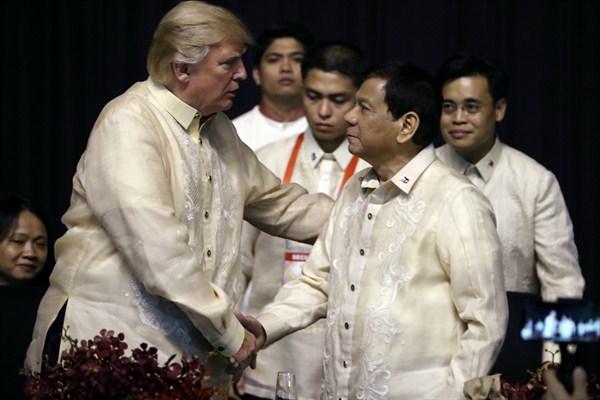During his marathon visit to Asia, the longest by a U.S. president in over 25 years, Donald Trump at least demonstrated to American allies and partners that he is not going to ignore the region. Following up on the Obama administration’s promise to regularly send high-level U.S. officials to major Asian summits to demonstrate Washington’s regional commitment, Trump attended the summits of the Asia Pacific Economic Cooperation and the Association of Southeast Asian Nations. But he cut short his trip at the last minute and skipped the East Asia Summit’s plenary session, which he had added to his itinerary earlier. He also held an impressive array of bilateral meetings.
In his pleasant interactions with Asian leaders, Trump clearly tried to use charm to build personal ties, most of all in China, where he had a “state-plus” visit in which he seemed to get along well with President Xi Jinping. He offered somewhat reassuring rhetoric, at least at times, about his administration’s position on the most dangerous regional challenge, North Korea’s nuclear and missile programs.
Unfortunately, despite Trump’s boasting, the trip did not deliver many substantial accomplishments. This is not necessarily a fault of Trump’s personal style or his sometimes-rambling speeches. Rather, much of the Trump administration’s vision for U.S.-Asia ties, from trade to strategic and political measures, simply does not mesh with Asian nations’ own plans. That includes many countries’ desire for greater regional trade integration and their impulse to keep relations warm with a rising China. As Trump almost completely ignored human rights throughout his visit, he may have further alienated large, pro-democracy segments of the population across Asia.

